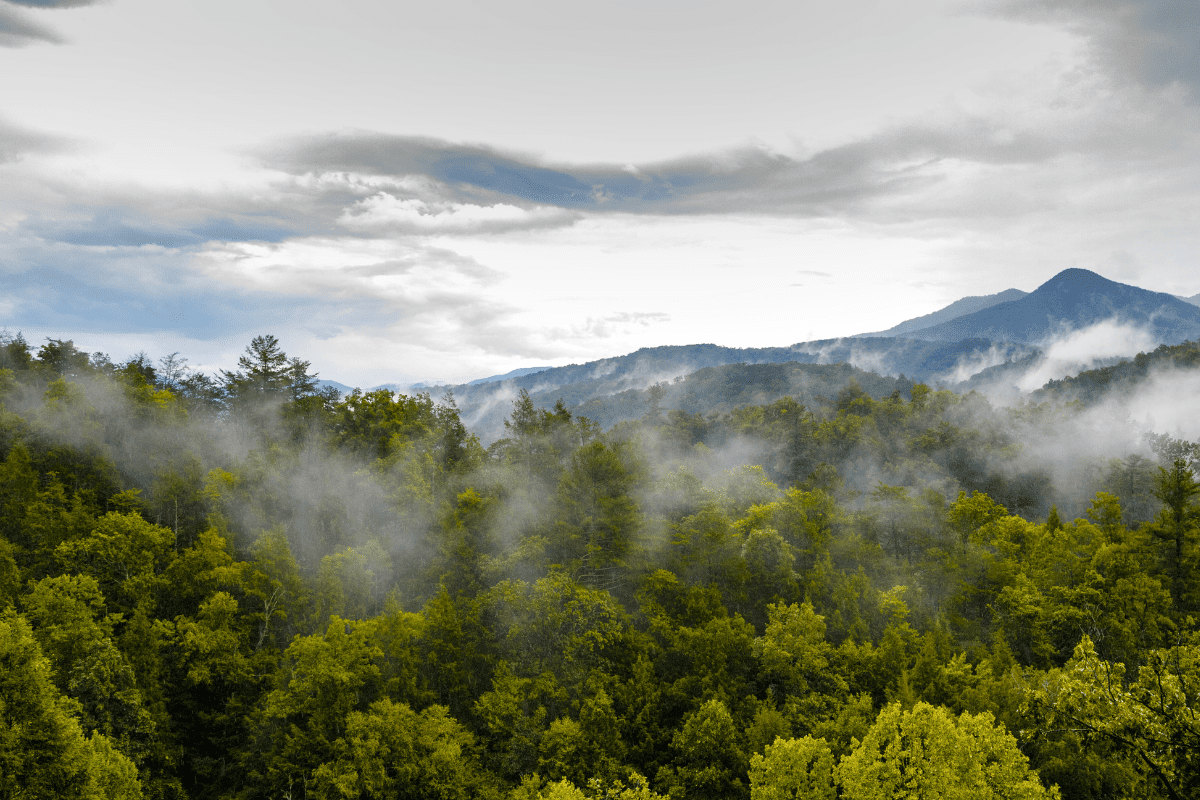If you've ever watched your tomatoes wilt in July heat while your neighbor's thrive, you're not alone. Tennessee gardening feels like playing three different video games at once, each with its own rules and boss battles.
The good news? Once you understand what makes our state tick (or rather, what makes our clay stick), you can grow just about anything.
Tennessee's split personality weather
Tennessee can't make up its mind about what climate it wants to be. We're officially spread across six USDA hardiness zones, from 5b up in the mountains to 8a down in Memphis. But here's the kicker: those zones just shifted in 2023, and some of us gained a whole zone overnight.
What the new zones mean for you
Memphis gardeners hit the jackpot, jumping from 7b to 8a. That's like getting a 3-degree warmer winter minimum temperature as a Christmas present. Nashville bumped up from 7a to 7b, which means those marginally hardy plants you've been babying might actually survive now. Check your exact zone here before you get too excited about growing bananas.
The zones tell you what might survive winter, but they don't tell you about our other personality quirks. Like how we can have 70-degree weather in February followed by snow in March. Or how East Tennessee's mountains create their own weather systems, with temperature dropping 3 degrees for every 1,000 feet you climb. The Great Valley only gets 40 inches of rain annually (practically desert conditions by Tennessee standards), while spots near the mountains can get hammered with over 100 inches.
Middle Tennessee sits pretty with 220-day growing seasons and 52-60 inches of well-distributed rainfall. It's like the Goldilocks zone of Tennessee gardening. West Tennessee takes the prize for longest growing season at 240+ days, plus they've got that fancy loess soil that's basically nature's potting mix, deposited by ancient winds to depths of 30-90 feet.
The clay situation (spoiler: it's everywhere)
Let's talk about the elephant in the garden: our clay soil. If you've ever tried to dig a hole after a rainstorm and ended up with something resembling pottery class, you know what I'm talking about. Tennessee's state soil is officially Dickson series silt loam, which sounds fancy until you realize it comes with a built-in concrete layer called a fragipan about 18-36 inches down.
Making peace with clay
Here's what actually works, according to folks who've been fighting this battle for decades. Mix one-third soil conditioner (pine bark fines work great) with two-thirds of your existing soil when planting anything. Add 1-2 inches of compost every single year without fail. George Kilgore, who's forgotten more about Tennessee gardening than most of us will ever know, swears by applying at least 2 inches annually.
The golden rule of clay: never, ever work it when it's wet. The soil should crumble in your hand like a stale cookie, not squish like Play-Doh. Get this wrong and you'll create adobe bricks that'll haunt you for years.
Your best long-term strategy involves cover crops, and Tennessee gardeners have perfected the mix:
- Austrian winter peas
- Crimson clover
- Tillage radish
- Spring oats
- Turnips
Plant this magic mixture mid-September if you're following corn, mid-October after soybeans. Those radishes will punch through compacted soil like underground jackhammers while the legumes add nitrogen. Come April or May, till it all in before planting summer crops.
Most Tennessee soil tests between pH 4.7-5.3, which is about as acidic as orange juice. You'll need 1-4 tons of lime per acre to fix this, depending on your soil test results. Yes, get a soil test. It's like getting a medical checkup for your garden.
Picking plants that won't quit on you
After years of trials, heartbreak, and occasional victories, Tennessee gardeners and researchers have identified the varieties that can handle our drama.
Vegetables that laugh at adversity
For tomatoes, 'Celebrity' reigns supreme with an 88% satisfaction rate in University of Tennessee trials. It's got VFN disease resistance, which matters when you're dealing with 70-80% humidity. Want heirlooms? 'Cherokee Purple' handles heat like a champ. For late blight protection (crucial when this disease can wipe out plants in 7-14 days), go with 'Iron Lady' or 'Defiant PhR'.
Peppers need multiple disease resistances to survive here. 'King Arthur' bell pepper achieved 90% satisfaction in trials and resists bacterial leaf spot, TMV, and potato virus Y. For heat lovers, Jedi F1 Jalapeño combines heat tolerance with disease resistance that would make a pharmaceutical company jealous.
Some vegetables actually prefer our clay:
- Paris Market carrots (short and stout)
- Cherokee Trail of Tears beans
- Any okra variety (they're practically weeds here)
- Sweet potatoes
- Collard greens
Going native for the win
Here's a radical idea: grow plants that evolved here. Purple coneflower, black-eyed Susan, and river birch don't need coddling because they've been dealing with Tennessee's mood swings for millennia.
Native shrubs like oakleaf hydrangea handle our shade and moisture variations, while American beautyberry feeds the birds and looks gorgeous doing it. For grasses, little bluestem laughs at drought, switch grass creates living privacy screens, and river oats brings movement to shady spots.
These natives support over 400 species of native bees. That's not a typo. Four hundred. Your native plant garden is basically a pollinator Airbnb.
Timing is everything (and everything is different by region)
Tennessee planting schedules read like a calculus textbook because every region plays by different rules. West Tennessee gardeners start everything 2-3 weeks earlier than their mountain cousins.
The frost date shuffle
Last spring frost dates range from March 25 in Memphis to mid-May in the highest elevations. First fall frost? Mid-September in the mountains to late October out west. These dates represent a 30% chance of frost, which is gardening's version of "probably safe but don't bet the farm on it."
Critical timing windows you can't miss:
- Pre-emergent herbicide: late February (West TN), mid-March (Middle/East TN)
- Tomato transplants: after last frost
- Peppers and eggplant: wait for warm soil (May)
- Fall crops: August (East TN), September (West TN)
Want continuous harvests? Practice succession planting:
- Lettuce and spinach every 7 days
- Bush beans every 14 days
- Corn every 30 days
- Squash every 21 days
Get detailed monthly calendars from UT Extension adjusted for your specific county. Elevation matters—a lot. Those calendars can shift by weeks within the same county.
The bug and disease parade
Our humidity creates a paradise for things that want to eat your plants. Brown marmorated stink bugs have invaded the entire state. Japanese beetles turn roses into doilies. Spider mites explode during hot, dry spells (yes, we get those too).
Fighting back without going broke
Fungal diseases love our weather. Powdery mildew shows up even without rain. Late blight can destroy a tomato crop in two weeks flat. Black spot on roses requires preventive spraying starting in early spring, before you see any symptoms.
Organic controls that actually work:
- Neem oil for soft bugs and fungus
- Bt for caterpillars
- Row covers for physical barriers
- Beneficial insect hotels
Create beneficial insect habitat with dill, fennel, yarrow, and native wildflowers scattered throughout your garden. It's like hiring tiny, free employees who work 24/7. Download the UT IPM app for instant pest identification.
When weather goes wild
Tennessee weather extremes require specific strategies. During droughts, water deeply but infrequently. Your plants need to develop deep roots, not become dependent on daily drinks. Native plants like purple coneflower and American beautyberry evolved for our feast-or-famine rainfall.
For excess moisture (more common than drought), remember George Kilgore's wisdom: "You can add water, but you will have a hard time removing water." Site selection and drainage matter more than any other factor. Raised beds aren't just trendy; they're survival tools.
Late frost protection includes row covers that provide up to 8 degrees of protection. Keep them handy until mid-May if you're in the mountains. Have a stash ready for surprise October freezes too.
Your support squad
Tennessee gardeners aren't alone in this adventure. The University of Tennessee Extension operates in all 95 counties. Their Master Gardeners contributed 204,308 hours of service in 2024, valued at $6.1 million. They maintain 124 demonstration gardens where you can see techniques in action.
Visit UT Gardens locations in Knoxville, Jackson, and Crossville to see what's possible. Find your county extension office for local expertise and soil testing.
Dr. Natalie Bumgarner from UT Extension reminds us that while warming zones let us experiment with new plants, weather variability remains our biggest challenge. Translation: just because you're now in zone 7b doesn't mean you should plant palm trees.
Making it all work
Success in Tennessee requires embracing our quirks rather than fighting them. Select varieties proven in our climate. Time operations based on your specific location, not generic advice. Manage clay soil systematically with annual organic matter additions. Include native plants for reliability and ecosystem support.
Most importantly, connect with other Tennessee gardeners. Join your local Master Gardener program. Visit demonstration gardens. Share your failures along with successes—we've all killed plants that "should" have thrived.
Tennessee gardening isn't easy, but it's never boring. Once you understand our state's personality (multiple personalities?), you can work with it instead of against it. Your garden might not look like those magazine photos, but it'll feed you, support wildlife, and give you stories to share over the back fence. And really, isn't that what gardening's all about?





